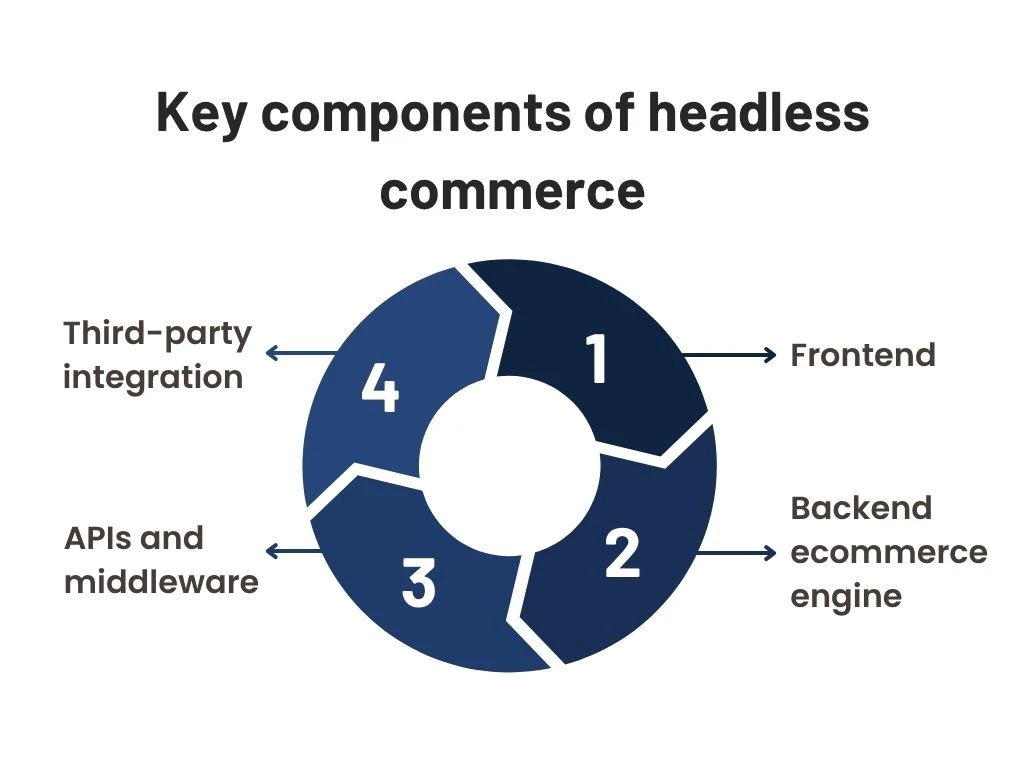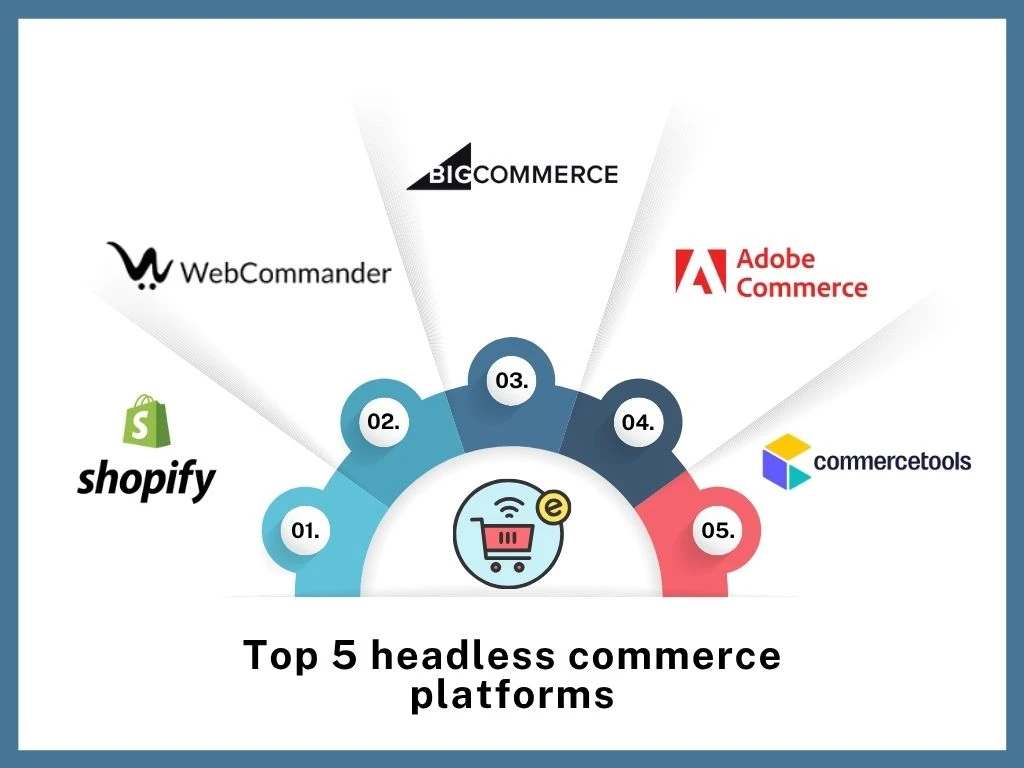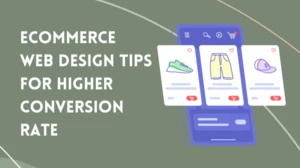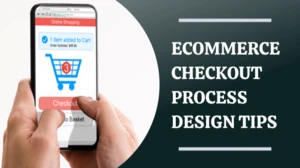Headless Commerce: Everything You Need to Know
With ecommerce continuing to grow, businesses are now keeping their focus on turning their websites way faster and better to use. Today's customers expect more than just some good products; they seek a smooth and connected shopping experience. No matter whether they are buying through a website, mobile app, or social media, they want to feel easy, fast and made just for them.
The constant need for speed and flexibility is one of the key reasons why headless ecommerce has become so popular lately. As per research, the market of headless commerce is expected to grow at a compound annual growth rate (CAGR) of 22.5%, reaching an estimated value of $13.2 billion by 2035. It is providing significant growth opportunities driven by technological advancements, growing markets and untapped potential.
Now, let's roll up our sleeves and dive into everything you need to know about headless ecommerce architecture — how it works, what the key components are, what the benefits are, what the steps are to implement it, and who the leading platforms are.
What is headless commerce? How it works?
Simply put, headless commerce is the separation of the ecommerce application's frontend presentation layer (what the customers see, like layout, designs and buttons) from the backend functionality (such as pricing, infrastructure, security and more).
Here, both the front and back end operate independently without affecting the other on one's changes. Between the backend and frontend systems, there are APIs (application programming interfaces) that work as messengers that carry information back and forth.
It is like a cable that connects a gaming console with a TV. Whenever a customer visits your site, the front end fetches data such as product info or prices through APIs from the backend. Those data are then assembled and displayed on the front end in real-time.
Here are the key components of headless commerce,

1. Frontend
This is what users see and interact with. Developers use frontend frameworks like React, Vue, or Angular, which let developers build tailored shopping experiences, offering full control over design, performance, and user experience.
2. Backend ecommerce engine
This is where the commerce logic and operations happen. The backend manages everything from product catalogues to inventory to user accounts to payments to fulfillments.
3. APIs and middleware
They serve as the communication bridge, allowing developers to request and send data between frontend and backend in a flexible way.
4. Third-party integration
External tools such as payment gateways (Stripe, PayPal), analytics (Google Analytics), and marketing tools (Mailchimp, Klaviyo) can be plugged into the architecture to extend capabilities.
Traditional commerce vs headless commerce
Here is a clear comparison that breaks down the key differences between headless and traditional commerce.
| Feature | Traditional commerce | Headless commerce |
| Architecture | The frontend and backend are connected | The frontend and backend are separate |
| Flexibility | Customisation is limited | Developers and designers get full control |
| Frontend customisation | It is mostly theme based and there are limited styling options | It can be fully customised with modern frameworks |
| Omnichannel experience | It is not easy to implement | It is built to support multiple channels |
| Scalability | It becomes challenging as traffic and features grows | It is highly scalable with modular architecture |
What are the advantages of headless commerce?
Here are some major benefits it brings to you if you go headless.
- You can use modern frameworks for faster website performance that will boost page speed, load times and SEO rankings.
- You can customise your storefront fully with no backend limitations for unique brand experiences.
- It will allow you to deliver consistent experiences across multiple devices.
- You can launch updates and new features more quickly while scaling frontend and backend independently.
- You can enjoy seamless integration with third-party services.
5 common use cases for headless commerce
Headless commerce supports a wide range of use cases. Below are five of the most common scenarios where headless architecture is often used.
1. Custom solution
Businesses that are in constant growth often find traditional platforms restrictive, especially those that aim to provide a highly customised user experience. With headless commerce, developers can get complete control over the front end. Brands can create tailored product pages, user journeys and checkout flows.
This allows brands to create unique layouts and designs and provide customised experiences based on user behaviour. From niche brands with specific customer needs to start-ups with unconventional business models to large enterprises that require scalable experiences, a headless setup is an ideal option.
2. CMS
Another common and powerful use case for headless commerce is integrating it with a headless Content Management System (CMS). Because content and commerce operate separately in headless commerce settings.
A headless CMS is used fully to manage and deliver content through APIs, while the backend handles other data. Marketing and content teams use this decoupled structure to work independently of developers.
3. International and multi-brand sites
Businesses that are operating across multiple regions or managing several brands under a single umbrella choose headless commerce. It allows them to maintain a single backend for their products, orders or inventory while deploying several frontend storefronts tailored to each region.
It also lets them integrate localised payment gateways, shipping providers and regional compliance rules through APIs.
4. Omnichannel retail
Today's customers interact with brands using a variety of mediums, from mobile apps to websites to social media to voice assistants. Headless commerce works great for such businesses that support omnichannel retail.
Businesses can manage one unified backend and deliver tailored frontend experiences to each channel as well. It enables real-time sync of product data, inventory levels, pricing, customer profiles or order history across every platform.
5. Mobile first commerce
Developers who want to build responsive and optimised user interfaces, especially for mobile devices, use headless commerce. It enables businesses to prioritise mobile user experience with no backend limitations. As the front end and back end are decoupled, they can use lightweight frameworks and mobile technologies.
Using the headless setup, businesses can also build custom mobile experiences that include features like gesture-based navigation, mobile wallet integration and personalised product recommendations.
How to implement a headless commerce solution
Understand whether headless commerce is right for your business or not
It is a must to assess whether the headless approach actually aligns with your business goals, technical capacity and customer experience expectations. You have to consider whether your business actually
- Need full control over the user experience
- Need to deliver content across multiple channels
- Look for scalability and long-term flexibility
- Has the expertise available to manage the decoupled architecture
Otherwise, it will be a right fit if
- You have to do a quick launch of your site
- You are a small business and have a low-budget
- You sell via only one basic channel
- Custom design and integrations are not your priority
Set the objectives
If you have decided that headless commerce is the right approach for your business, define what you need to achieve with this transition. This will help you to invest in the right features and tools while making sure everyone from technical teams to designers to marketers is aligned.
List some of the typical goals your business can aim for. You can apply the SMART framework.
- S (Specific)- what exactly do you need to achieve?
- M (Measurable)- how will you measure success?
- A (Achievable)- Are the goals realistic enough and go with your resources?
- R (Relevant)- Does it go with the business strategy?
- T (Time-bound)- When are you expecting results?
Do some research
In the next step, try to dive deep into research to make sure you are making some informed decisions. Explore other businesses to find the platforms they are using, the benefits they have gained and the challenges they are facing.
Study the frontend and backend platform options as well. Examine the tools you have picked, and check the authentication, security, API limits, real-time syncing capability, and more.
Pick the right frontend and backend stack
Choosing the frontend and backend technologies that will power your store is one of the most important steps of your headless commerce journey. Frontend stacks are those technologies that are used to build the user interface, such as JavaScript frameworks, hosting services, and site generators and backend stacks are those that handle business logic, such as checkout, inventory and customer accounts.
Ensure frontend-backend compatibility as well. Make sure they work well together in case of speed and data structure and are supported by your hosting and DevOps environment.
Determine where and how your frontend will be hosted
As the frontend is decoupled from the backend, it must be hosted and managed separately. You must choose the right hosting platform because it is your hosting environment that directly impacts your site's speed, reliability, security and scalability.
There are many modern hosting platforms that offer robust features like automatic scaling, built-in security networks and more.
Ensure API readiness and compatibility
APIs are the glue that connects the frontend, backend and all third-party services. In this case, you have to make sure that your chosen backend ecommerce platform offers well-documented APIs like REST or GraphQL to support all the functionalities you need.
Also, make sure your frontend framework can consume those APIs without any performance issues. In addition, your APIs have to be scalable and secure.
Plan for third-party integration
With headless commerce, you get the flexibility to build a best-of-breed tech stack by integrating third-party tools and services. So, start by identifying the must-needed third-party services your business needs.
Make sure the tool offers well-documented APIs that are compatible with your backend and frontend stacks. Otherwise, poorly integrated third-party tools will lead to slow load times, data syncing issues and inconsistent customer experiences.
Test, launch and optimise
When your headless commerce solution is fully developed, and all integrations are in place, it is time to test thoroughly before launching. Use this phase to validate the performance, functionality, security, and overall user experience of the entire system.
Even after launch, you need to perform ongoing optimisation by monitoring real user interactions through analytics tools.
Top 5 headless commerce platforms
There are several players in the headless commerce market that are playing a key role in development and implementation.

Here are some:
1. Shopify
This globally recognised ecommerce platform fits perfectly with the headless approach. This system can be used headlessly via GraphQL and REST APIs. It is ideal for small to medium-sized businesses that want scalability, fast deployment, and a reliable infrastructure.
2. WebCommander
This platform is tailored for custom ecommerce solutions. It is suitable for businesses with complex product configurations or specific local requirements. It comes with strong integration flexibility. It easily allows developers to build unique frontends while relying on its stable backend.
3. BigCommerce
This platform is designed to empower merchants with several tools and a vibrant app ecosystem. BigCommerce integrates with the front end with no hassle and allows businesses to build and expand their online stores with much flexibility.
4. Adobe Commerce
This platform is designed for companies with complex operations and technical resources. From high customer traffic to large product catalogues to high business complexity, it handles everything.
5. Commercetools
This is another leading platform for headless commerce that is built entirely around APIs and microservices. It is a common choice for large enterprises that need a highly customisable commerce solution with global capabilities.
Final words
Most importantly, headless architecture is not a one-size-fits-all solution. Rather, it requires complete planning, technical capabilities, and alignment with the broader business goals. If you are interested in exploring how real-world brands are using headless architecture, check out this writing on headless ecommerce examples and get some real-world insights.



![How to Start an Ecommerce Business in Australia [2023 Guide]](/template/5731a701/images/resource-blog-right-img1.png)





